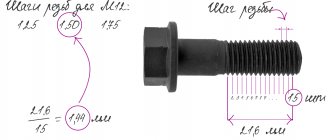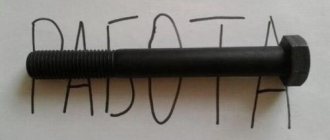Today, people are surrounded by electronic devices, most of which are wireless and powered. The industry produces many galvanic cells (batteries) and accumulators. They often match in size and appearance. But the galvanic cell is disposable, and the battery can be recharged. What are the differences between regular batteries and rechargeable batteries, and how to recharge the latter - this is discussed in the article.
There are batteries that can be recharged multiple times.
Choosing a charger
And finally, let’s look at which chargers are chosen by users of devices powered by rechargeable batteries. The table was compiled according to the degree of popularity of the latter.
Rating of chargers by popularity
| Rating | Appearance | Model | Manufacturer | Battery type | Battery size | Number of compartments (independent channels) | Additional functions | price, rub. | Where can I buy |
| 1 | Nitecore D4 | TM Nitecore | IMR/Li-ion, Ni-MH/Ni-Cd | AA (R6), AAA (R03), AAAA, C (R14), 26650, 22650, 18650, 10440, 14500, 16340, CR123A, 17670, 17500, 18490, 18350 | 4 | Automatic type detection, status display on LCD display, capacity detection, restoration, protection against polarity reversal, overcharge, overdischarge, powered by car cigarette lighter | 2 200 | Ya.Market | |
| 2 | Liitokala Lii-500 | Liitokala | Li-ion, Ni-MH | 18650, 18490, 18350, 17670, 17500, 17335, 16340 (RCR123), 14500, 10440, 26650, 22650, 26500, A, AA, AAA, SC | 4 | Automatic type detection, LCD status display, test function, recovery, reverse polarity protection, overcharge, overdischarge protection, USB port 5V/1A | 2 700 | Ya.Market | |
| 3 | Palo P10 | Palo | NI-MH, NI-CD | AA, AAA | 8 | LED charge indication, fixed charging current (200 or 180 mA), low cost, pair charging, pair auto-off at the end of charging | 900 | ||
| 4 | Opus BT-C3100 v2.2 | Opus | Ni-Cd, Ni-MH and Li-Ion | AA, AAA, C (R14), 10440, 16340, 14500, 17500, 17335, 17500, 18490, 17670, 18650, 22650, 26650 | 4 | Auto-detection, charge/discharge/testing, status display on LCD display, charging and recharging current programming, trickle charging mode, recovery | 2 800 | Ya.Market | |
| 5 | SkyRC MC3000 | SkyRC | NiMh, NiCd, NiZn, Eneloop, Lithuim-Ion, Lilo4.35, LiFeP04 | AA, AAA, C, D, SC, AAAA, 18650, 14500, 16340, 32650, 14650, 17670, 10440, 18700, 18350, RCR123, 18500, 18490, 25500, 13500, 13450, 1665 0, 22650, 17500, 10340, 17650, 10500, 26500, 12340, 12500, 12650, 14350, 14430, 16500, 17350, 20700, 21700, 22500, 32600 | 4 | Automatic type detection, status display on LCD display, remote control via Bluetooth 4.0, recovery, protection against polarity reversal, overcharge, overdischarge, temperature control, USB port 5 V/2.1A, power supply from on-board network, maximum charging current up to 3 A | 7 000 | Ya.Market |
How to properly charge the battery
In order for the batteries to last as long as possible, you need to carefully study the instructions included with the batteries themselves and the charger.
It is important that the charger is correctly selected and suitable for reusable batteries.
It is advisable that the process of renewing the capacity proceed slowly. This way, the power supply elements will be fully charged and will last in electronic equipment much longer.
Do not charge batteries at temperatures below 5 degrees and above 50 Celsius.
The batteries may become warm during charging. It's okay if they feel comfortable to the touch. If the heat becomes more intense, immediately unplug the device from the outlet.
Modern rechargeable portable power sources do not have a memory effect, which means no preparations are needed.
The exception is nickel-cadmium, which is labeled “Ni-Cd”.
If the batteries have not been recharged within 24 hours, they should be disposed of. Such power supplies have already failed.
For a visual example, we recommend watching the video on how to charge a battery from a charger:
Without a multimeter
If you don’t have a tester at hand, you can check the battery’s performance in a simpler, but less accurate way. To do this, you need to lift it perpendicular to a horizontal hard surface at a height of 2–3 cm and carefully release it.
If the battery is working, it will fall with a hard sound and, most likely, will remain standing. The exhausted element will make a muffled sound when falling and will tip over.
If the method does not help, increase the height of the battery drop to 20 cm. A charged element will simply fall on its side, but a discharged one may jump several times and fly away from the place of fall by several cm. There is an opinion that this test method only works with alkaline batteries, but There is no exact confirmation of this.
Well, the easiest way to check the performance of a battery is to insert it into one or another device, for example, into a remote control, which requires a minimum residual resource for operation. If the batteries do not work in the remote control, you can safely throw them away.
Why can't you recharge regular batteries?
If you think about the question of whether it is possible to charge ordinary batteries in a charger, then you can definitely answer the following: they are not intended for this.
But many are not stopped by warnings. At the same time, some can even boast of successful experience. Why is this happening? There is a rational explanation for this.
Batteries can be recharged because when current appears in the electrolyte case, oxygen and hydrogen ions begin to form, which resume the operation of the power source.
Regular batteries are designed differently. Most often they are salt; ions flow from the electrolyte to the electrodes, the supply of which runs out over time.
In addition, most cheap copies oxidize during operation. Most often, their potential can only be used by half, and after the formation of a crust of dielectrics, they become unusable.
In expensive options such as Duracell and Energizer, manufacturers actively combat salt formation. Therefore, most often these batteries lose their charge by at least 90 percent.
When consumers place a regular battery in a charger, the current causes the salt crust to break down. As a result, residual charge becomes available that has not been consumed. And the power supply itself does not charge.
You cannot keep regular cells charged for more than 10 minutes or until they become very hot. Otherwise, unpleasant consequences may occur:
- It will hiss and ruin the charging device.
- If overheated, the salt base may even explode.
- A short circuit may occur.
Zinc batteries (marked with letters Zn) cannot be charged under any circumstances, since when current is applied to them, the electrodes are completely destroyed.
Multimeter
The first and most reliable way: using a multimeter. To begin with, you can conduct a test without load, immediately eliminating unsuitable batteries from the total number. The multimeter turns on, the mode for measuring voltage is selected, and the limit limit is set to 20V. Next, we apply the probes to the battery contacts and see what value appears on the screen.
| Testing with a multimeter without load |
The remaining battery life is determined by the tester readings:
- voltage more than 1.35 V - the battery can be installed in any household electrical appliance;
- indicators are in the range of 1.2 V - 1.35 V - the element is suitable for less demanding devices;
- the value is less than 1.2 V - the product can only be thrown away; testing it under load is pointless.
Obviously, there are no difficulties in how to check the battery with a tester. The procedure is also simple to perform with a load, for example, using a light bulb. The test will show the voltage of the product if you insert it into an electrical device. This will help determine in which device the energy source can still be useful.
Let's consider in order how to check batteries with a tester under load:
- It is necessary to attach the multimeter probes to the contacts of the power module being tested.
- At the same time, connect a load (you can use a small light bulb) and wait 30 seconds.
- View the result.
- Sort batteries according to the following criteria: with a charge of 1.1V and below, only recycle them; with a charge of up to 1.3V, you can use them in a flashlight or remote control. If the battery has a charge of 1.35V, then it can be used in watches, players, cameras and other devices.
| Testing with a multimeter with a load |
Charging methods
- Batteries. These are special devices for charging batteries. They are used to charge alkaline batteries, but salt batteries should never be charged in such a device.
- Connection to the power supply. The battery is connected to the terminals of the power supply, plus to plus, and minus to minus.
- Heating. This method is very simple, but it is considered dangerous, since the battery can simply explode. Most often, hot water is used, which should reach the entire area of the battery.
- Reducing volume. This is an effective method that is used most often. The battery is pressed down with teeth or pliers, which reduces its volume. This method is used only once, after which the battery cannot be used again.
- Boiling in saline solution.
Refilling the battery. The most difficult method, which only a true expert can do.
Knowing how to properly charge batteries, you can significantly extend their life and reuse them in any necessary device.
How to find a battery among batteries
To determine which batteries can be charged in a charger, you must first learn to distinguish batteries from regular salt batteries.
These two types have the following differences:
- Appearance. The capacity is always indicated on the battery in large large numbers. The higher the number, the longer it will last.
- Inscriptions in a foreign language. In English, “rechargeable” is “rechargeable”. And the phrase “don't recharge” means that these batteries are ordinary and cannot be recharged.
- Marking. The battery has abbreviations: NiCl, Ni-MN, Zn, HR, ZR, KR. These are the designations of its type. For saline, the following abbreviations are included in the labeling: R, CR, LR, FR.
- Price. Batteries are several times more expensive than regular batteries, so the cost of the presented specimen is also worth keeping in mind.
If you rely on these points, you can easily distinguish a battery from a regular battery in any circumstances.











